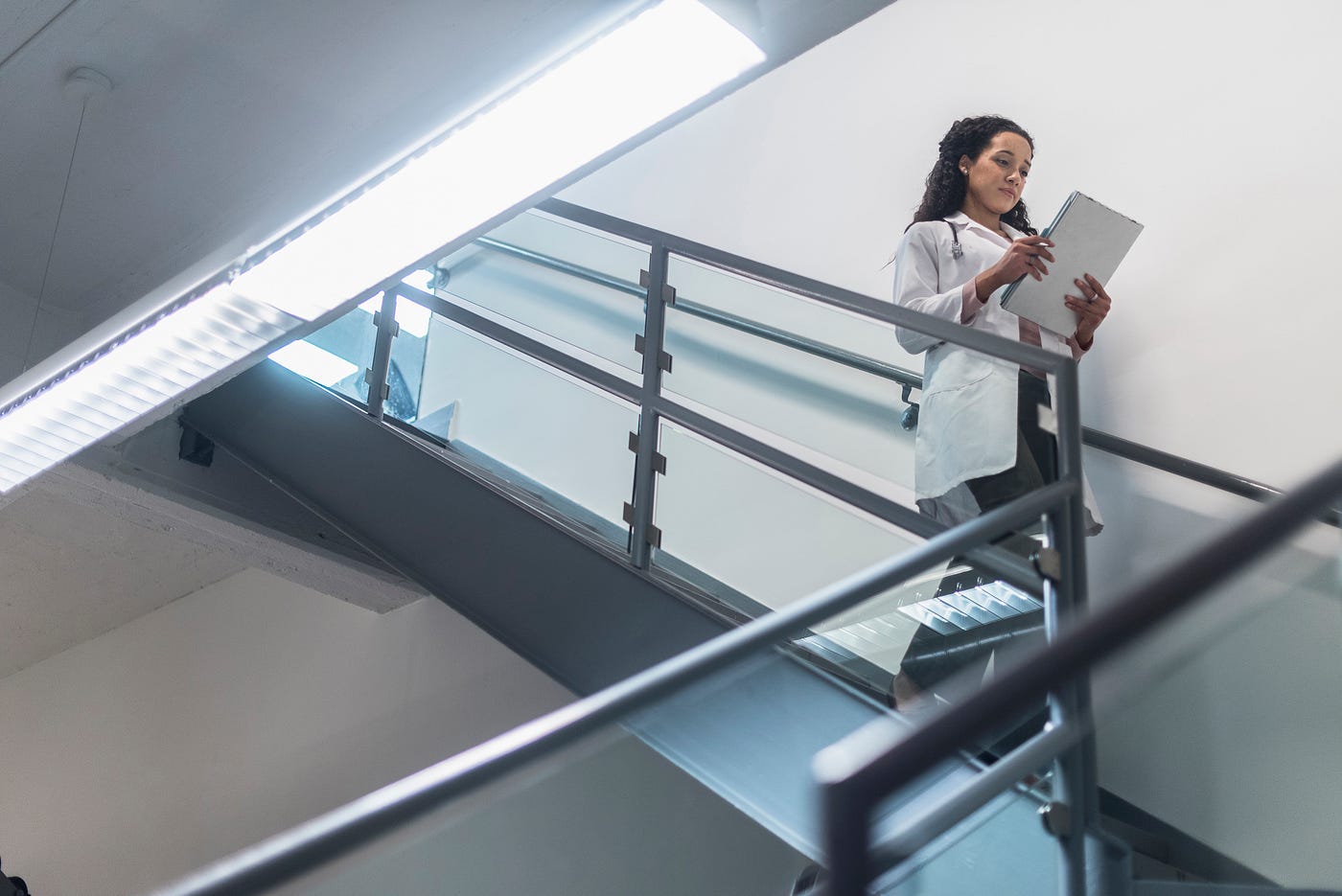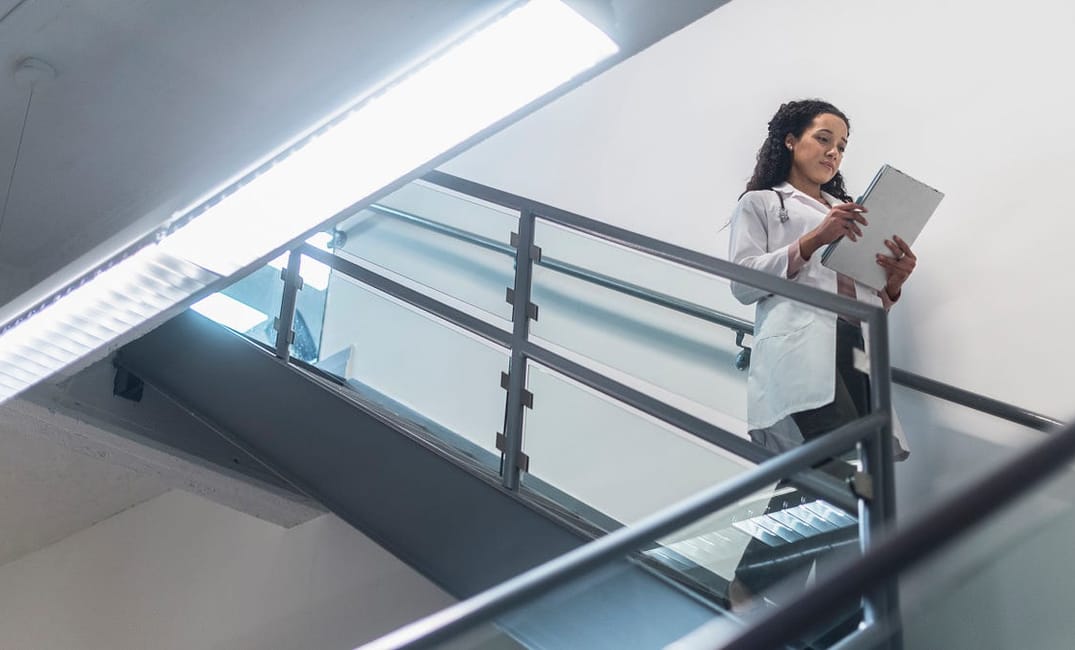
I tell this story often. Or rather, I tell parts of it often, when, at a family function, someone asks for an entertaining anecdote about residency.
It goes like this. My intern year, during one of my very first shifts out of medical school, I was working in the emergency room at San Francisco General Hospital. This is the city and county’s safety net hospital — where patients are seen regardless of their insurance status or ability to pay — and its only Level One trauma center. There, the nurses wear SFGH hoodies emblazoned with the slogans “We cheat the reaper,” and “This is as real as it gets.”
I am assigned to a patient, an older Black man presenting for a shoulder abscess. He needs a procedure called an incision and drainage, along with antibiotics. I ask if he has any idea how this infection began.
“Skin popping,” he says.
“Ahh,” I say, “Well, we all do that from time to time. It is something I do myself more often than I’d like to admit!”
I present to the senior doctor and assemble the supplies for the procedure. We ultrasound his shoulder and find a large pocket of purulence consuming his deltoid. As soon as the incision is made, the room fills with the smell of rotting flesh. After we drain it, his shoulder is deflated, its edge sloping inward, eerily concave. We pack the hollow with a long strip of ribbon gauze, leaving the end peering out, like a flag planted on this newly made terra firma.
Outside of the room, I say, “All that from popping a pimple.”
“What?” the attending says, “That wasn’t from popping a pimple. It was from skin popping.” He turns and faces me, “Do you know what that is?”
“I am understanding now that I do not.” Color climbs into my cheeks. I feel perhaps this hard-scrabble ER doc is enjoying schooling a fresh intern too much.
“It’s when you use a lot of heroin, and you can’t find any more veins, so you inject drugs under your skin,” he tells me.
Oh god. Oh. God. I feel panic climb into my chest.
If you are not humbled, you aren’t learning. I am learning. I am a learner. Residents are doctors in training.
Despite all positive self-talk, I am mortified.
“I see,” I say, then head for the patient’s room. For the first time, I pray a patient will not have been discharged yet.
Thank god, he is still here — I spot him through the curtain. His shirt is back on, and he’s sliding an arm into his black leather jacket.
“Sir,” I call to him, winded by my short sprint down the hall, “I just wanted to catch you to say…” He puts down his discharge paperwork. “I didn’t know what you meant….” I fumble. “I misunderstood… when you said you had gotten your infection from skin popping.”
He nodded. I could tell that he knew that I knew.
“And when I said that I skin-popped, that we all skin-pop… I didn’t realize what I was saying.”
“No, no I didn’t think so,” he said. He laughed. My mortification evaporated, and I became so grateful toward him, so grateful that he has shown me this compassion, that he doesn’t tell me what I am always afraid of hearing, that I’m stupid. How naïve can a doctor be? Instead, he is here laughing, and released by his laughter, so do I. We have a long laugh.
“I am sorry for that confusion,” I said.
“I thought you were a new pup,” he said, “I hadn’t seen you in this ER before.”
“You didn’t say anything.”
“I figured you’d figure it out.”
“Well, I suppose I did.” We laugh again.
Fade out on the two of us in good spirits. At this juncture, it is a safe, comedic story. I am the butt of the joke, the bumbling intern, toppled by drug lingo, not yet street savvy, schooled by the ER.
At the laugh, the structure is actually that of a perfect status-switch, where an actor starts a scene with high status and ends with low status and vice versa — the teacher becomes the student, the patient the doctor. Much of the comedy of the story takes place within this dramatic irony, wherein he knows the central plot point and I do not.
But in reality, the story doesn’t end here. I haven’t addressed the patient’s drug use, mostly because I didn’t know until just now it was the cause of his infection.
“Are you interested in medicines that help treat heroin use?” I ask.
“I’ve tried them all,” he says, “If any of them worked I’d be on them now.”
“You’ve tried methadone and Suboxone?” I want to clarify what I am talking about, but as it comes out of my mouth, I am concerned he will interpret this clarification as pedantic. Five minutes ago, it was revealed I knew nothing about the terms used around this illness, and now, moments later, I am quizzing him on the treatments.
“I am tired of everyone trying to get me to try those,” he says.
“A lot of patients who use these medicines feel more stable on them, more themselves, with fewer cravings.”
At least I hope I said something like that. I’ve had much more training since this day. I have my X license now and can prescribe Suboxone.
“I have the number for the closest clin — ” it is one line too much.
“I am tired of hearing about it,” he says as he picks up his paperwork, demonstrably, zips his leather jacket, irritably, and leaves.
Like that, our status has switched back, I am the doctor, discussing treatment, he is a patient getting lectured on medicines to take — the situation has been rendered humorless.
I leave out this ending — his anger, my ineffectual motivational interviewing — from my retellings. I also leave out the fact that when I looked up his medical record later on, he had returned to have the shoulder drained again. And again. Diagnosis: opiate use disorder, severe.
Which leads me to ask myself, what compels me to tell this story so much?
The humor is derived from assumptions brought to the interaction. The expectation being that the older, male patient of color uses drugs; the young, white, female medical doctor does not. Can you imagine, me! Using injection drugs! Haha! In reality, these comedic assumptions play on and reinforce more sinister stereotypes of addiction, which are just that — stereotypes and untrue.
Or, do I tell this story as humble bragging rights: I have a real job, with real patients who have damn real issues? Am I exploiting his story, surprising my suburban family with the punch line of drug use, and gritty, urban realities? And by leaving out the ending, am I sanitizing it, sterilizing it to make it “real enough” to be entertaining, but not “too real” to be tragic?
When I try to intellectualize why I cut the story short, I often tell myself it’s because I don’t want to “get into it.” I don’t want to hear how my uncle negatively views people who inject drugs, or wrangle with his thoughts on methadone as “a drug that just replaces drugs.” I don’t want another round of “Why do people do that to themselves?” and questions about my safety. It is difficult ground to tread, and one where politics and religion get involved quickly, and deeply.
But also, I am the exact person who can challenge my assorted family members and friends on the benefits of medication-assisted opiate treatment. I have experiences and expertise they do not. I might not change their minds, but also… I might. If anyone might offer a different view, one backed with research, schooling, real-life experience… wouldn’t it be me?
Stories are some of the most powerful things we have — we remember them far better and with more detail than we absorb statistics or facts. In reflecting on how I stop this story short, I worry now I have not challenged myself, or my listeners to look deeper at the realities and the cycles of addiction. That I tend not to share my own sadness and frustration at how this interaction ended. Or just how many interactions end like this, patient and doctor upset, frustrated. I leave out the greater truth of his experience, and the greater truth of mine.
And so, I ask of myself, and of you, to aim to tell our stories in full.
Sign up for The Bold Italic newsletter to get the best of the Bay Area in your inbox every week.







